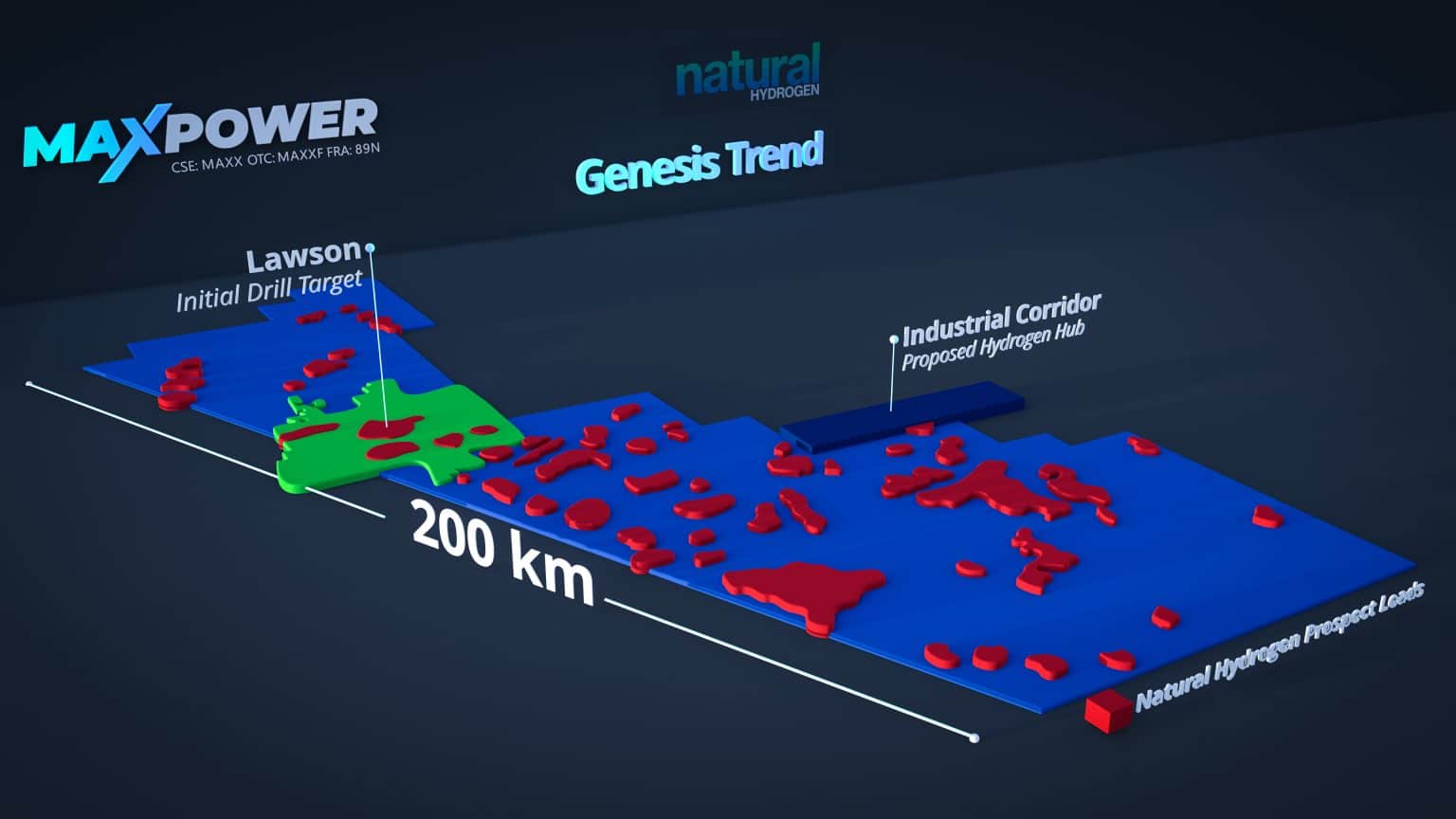In a move that could test the commercial viability of natural hydrogen exploration in Canada, MAX Power Mining Corp. has defined the first deep-drilling target specifically designed to locate naturally occurring hydrogen gas within the country’s subsurface.
The “Lawson” well, located in southern Saskatchewan’s 200-kilometer Genesis Trend, marks a turning point in the company’s transition from data acquisition to field execution, with drilling slated to begin in the fourth quarter of 2025 following imminent well licensing.
Natural hydrogen—sometimes called “white hydrogen”—has gained traction among global energy majors seeking scalable, low-cost, and carbon-free hydrogen sources that can complement electrolytic and methane reforming pathways. While still in its early exploration phase, the concept has drawn increasing attention after discoveries in Mali, France, and the U.S. Midwest demonstrated that naturally occurring hydrogen could accumulate in economically relevant quantities. MAX Power’s effort positions Canada within this emerging domain, targeting geological formations that may trap hydrogen produced through natural water–rock reactions deep underground.
At Lawson, MAX Power’s geological model indicates the presence of all five critical components of a viable hydrogen accumulation system: source rocks, migration pathways, reservoirs, seals, and structural traps. The target sits adjacent to the Prairie Evaporite margin, a thick “salt barrier” formation that may function as an effective regional seal. According to the company’s chief geoscientist, Steve Halabura, the structure provides “a rare combination of deep-rooted intrusive features and four-way closure,” characteristics that can trap migrating gases and prevent dissipation through overlying strata.
The Lawson target was refined using approximately 180 line-kilometers of 2D seismic data—both proprietary and vintage—along with regional aeromagnetic and gravity datasets, subsurface mapping, and gas analyses from historical wells. The company’s proprietary Prospect Ranking Tool synthesized these datasets to prioritize drill locations based on subsurface geometry, seal integrity, and potential hydrogen migration pathways. The well sits within an area supported by strong existing infrastructure, northwest of the Regina–Moose Jaw industrial corridor and the proposed Saskatchewan Hydrogen Hub, reducing logistical barriers for testing and future development.
MAX Power’s current land position—1.3 million acres of permitted hydrogen exploration territory and an additional 5.7 million acres under application—represents the largest natural hydrogen portfolio in Canada. If the Lawson test validates the company’s geologic model, it could de-risk roughly 20 similar prospects identified along the Genesis Trend. Halabura framed the well as “the right target to begin proving the natural hydrogen exploration thesis in Saskatchewan,” suggesting that success at Lawson could define new resource plays across the basin.
The company’s pivot from exploration to drilling follows a broader global uptick in natural hydrogen investment. Industry partnerships and early-stage financings in 2024 and 2025 have demonstrated that major energy players view natural hydrogen as a potentially disruptive element in the hydrogen economy—one that could bypass the high electricity demand of electrolysis-based production. However, geological uncertainty remains high, and commercial-scale extraction has yet to be demonstrated.
Stay updated on the latest in energy! Follow us on LinkedIn, Facebook, and X for real-time news and insights. Don’t miss out on exclusive interviews and webinars—subscribe to our YouTube channel today! Join our community and be part of the conversation shaping the future of energy.





